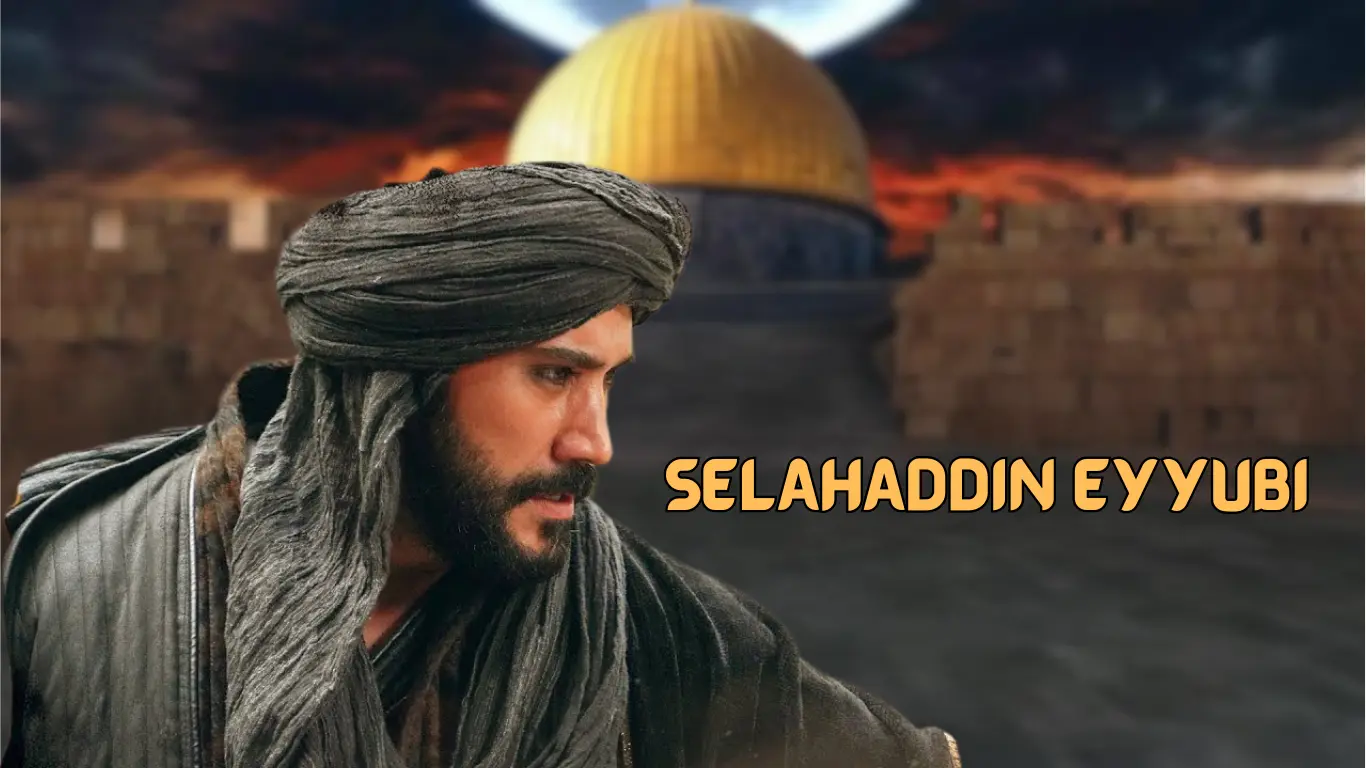Kudus Fatihi Selahaddin Eyyubi
English title: Saladin The Conquerer of Jerusalem
In the ever-evolving world of television storytelling, a few series have captivated audiences by seamlessly blending history and legend, like “Kudus Fatihi Selahaddin Eyyubi.” This engaging historical drama takes viewers on a journey into the 12th century, immersing them in the life and legacy of one of history’s most respected figures: Salah ad-Din, known in the West as Saladin. With its compelling character development, intense plotlines, and stunning cinematography, “Kudus Fatihi Selahaddin Eyyubi” has carved out a unique place in modern media, bringing history to life in an unforgettable way.
In this article, we dive deep into the series, exploring its historical accuracy, artistic interpretations, and the cultural significance of its storytelling. From the majestic landscapes of medieval Jerusalem to the complexities of political intrigue and faith, the series invites us to re-examine the past with a fresh perspective. Join us as we uncover the layers of this remarkable production, understanding how it continues to resonate with modern audiences while celebrating the legacy of an actual historical icon.
Exploring the Narrative Depth of Kudus Fatihi Selahaddin Eyyubi
The series masterfully intertwines historical facts with artistic creativity, weaving together a rich tapestry of characters and events that bring the era of Selahaddin Eyyubi to life. Throughout each episode, the show highlights leadership challenges, portraying Selahaddin as a fierce warrior and a skilled political strategist facing loyalty, faith, and morality issues. Each battle is not just about territory but also about ideals of justice and unity that he strives to embody—reflecting the turbulent socio-political landscape of the time.
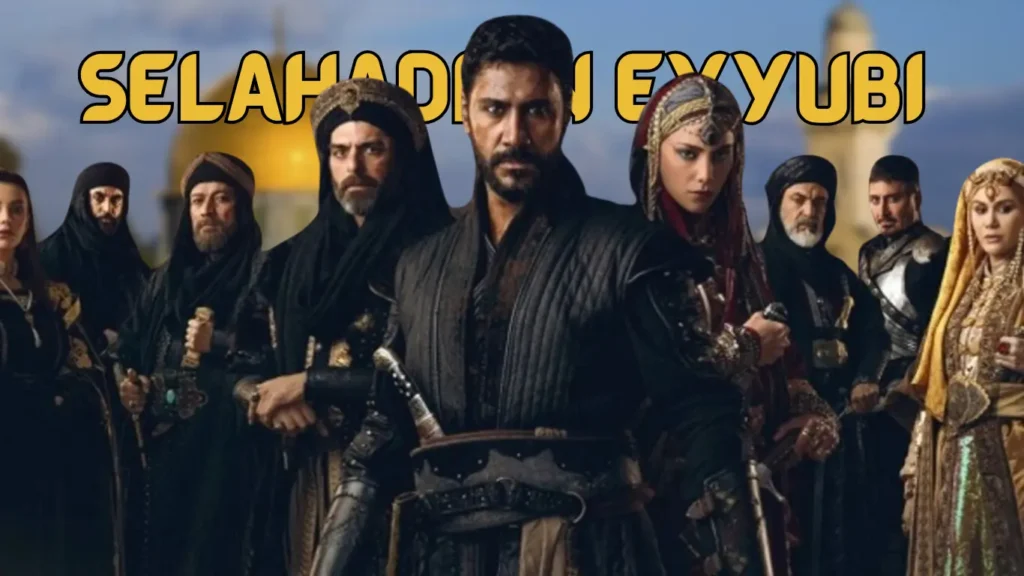
One of the narrative’s most captivating aspects is its focus on interpersonal relationships, especially between Selahaddin and his allies or adversaries. The series showcases diverse perspectives, offering a nuanced view of heroism and villainy. From epic battles to quiet moments of reflection, character development invites viewers to connect with each figure’s motivations and struggles deeply. This approach transforms historical figures into relatable characters, grounding their stories in genuine human emotion.
Symbolic elements further enhance the storytelling. Visual motifs like the crescent moon and crossed swords serve as reminders of the broader cultural conflicts. Below is a simplified table representing the major themes, symbols, and pivotal moments in the series:
| Event | Thematic Element | Symbolism |
|---|---|---|
| The Siege of Jerusalem | Faith vs. Power | Crescent Moon |
| Alliances Formed | Unity in Diversity | Crossed Swords |
| Battle of Hattin | Struggle for Identity | Flag of the Lion |
By thoughtfully blending historical context with rich character depth, the series delivers a captivating narrative that resonates with today’s audience and ignites discussions about the ongoing relevance of Selahaddin Eyyubi’s legacy.
sZXI%3D
Character Development: The Faces Behind the Legends
Character development is essential in historical narratives, giving depth to legendary figures like Selahaddin Eyyubi. The series explores his transformation—from a young warrior with ambitious dreams to a respected leader in the Crusades—portraying his growth in resilience and moral complexity. Selahaddin’s journey highlights his military conquests and internal struggles, allowing audiences to connect with the human side of his leadership.
The supporting characters also play crucial roles in enhancing Selahaddin’s story. From mentors who provide wisdom to rivals who test their limits, these characters help portray a multifaceted depiction of leadership. The relationships he forged— alliances and conflicts—enrich the narrative, turning his achievements into a more personal and relatable journey.
A detailed look at Selahaddin’s essential experiences is captured below:
| Event | Impact on Selahaddin |
| First Battle | Ignites his passion for leadership |
| Formation of Alliances | Teaches the importance of unity |
| Defeat in Siege | Strengthens resilience and strategy |
Production and Cast of Kudus Fatihi Selahaddin Eyyubi
The production of Kudus Fatihi Selahaddin Eyyubi is a remarkable feat that brought together some of the most talented individuals in the television industry. The series was directed by renowned filmmaker Mehmet Bozdağ, known for his expertise in historical drama and bringing epic tales to life with authenticity and artistic vision. The production was overseen by Bozdağ Film, a studio celebrated for its meticulous approach to historical storytelling, ensuring that visual grandeur and historical context were carefully executed.
The lead role of Selahaddin Eyyubi is portrayed by the talented actor Engin Altan Düzyatan, who brings depth and charisma to the iconic figure. Düzyatan’s portrayal captures the complexity of Saladin’s character, balancing his strategic prowess with moments of vulnerability. Other notable cast members include Burak Özçivit, who plays a key ally and confidant, and Nurettin Sönmez, who delivers a powerful performance as one of Selahaddin’s fiercest rivals. The ensemble cast also features diverse actors who skillfully depict the allies, foes, and significant figures surrounding Selahaddin, each contributing richly to the narrative tapestry.
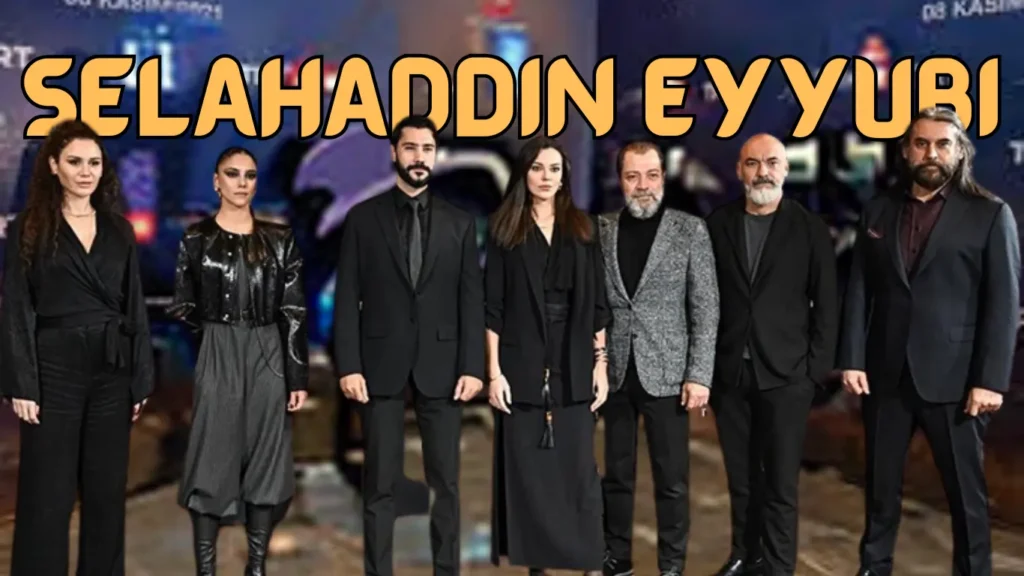
The crew behind the scenes played an equally important role in bringing the series to life. The cinematography, led by Kadir Çetin, is a visual masterpiece, with breathtaking shots of expansive battlefields and intimate character moments. Under Ayşe Durmaz’s direction, the costume design captures the essence of 12th-century attire, adding a layer of authenticity to the portrayal of medieval life. The soundtrack, composed by Zeynep Alasya, weaves a powerful auditory backdrop that heightens the emotional depth of each scene.
Together, the production and directing crew and a dedicated cast have created a visually stunning and emotionally compelling portrayal of one of history’s most significant leaders. Their collective talent and dedication ensure that Kudus Fatihi Selahaddin Eyyubi stands as a testament to quality storytelling, offering viewers an immersive experience honing Selahaddin Eyyubi’s life and legacy.
Cinematic Techniques and Visual Storytelling
The series expertly uses cinematic techniques to elevate storytelling, blending visual artistry with historical content. Dynamic camera angles and powerful shots immerse viewers in Selahaddin’s world, enhancing the emotional weight of each scene. Wide shots of expansive battlefields contrast with intimate close-ups, creating a compelling combination of grandeur and personal struggle.
Color palettes and lighting are carefully chosen to reflect the series’ themes. Warm hues are used during moments of unity and hope, while cooler tones mark times of conflict and uncertainty. These visual contrasts deepen character development, helping audiences grasp the tensions in Selahaddin’s journey. Symbolic imagery, such as the falcon representing leadership, adds further depth, inviting viewers to explore the subtleties beyond the surface plot.
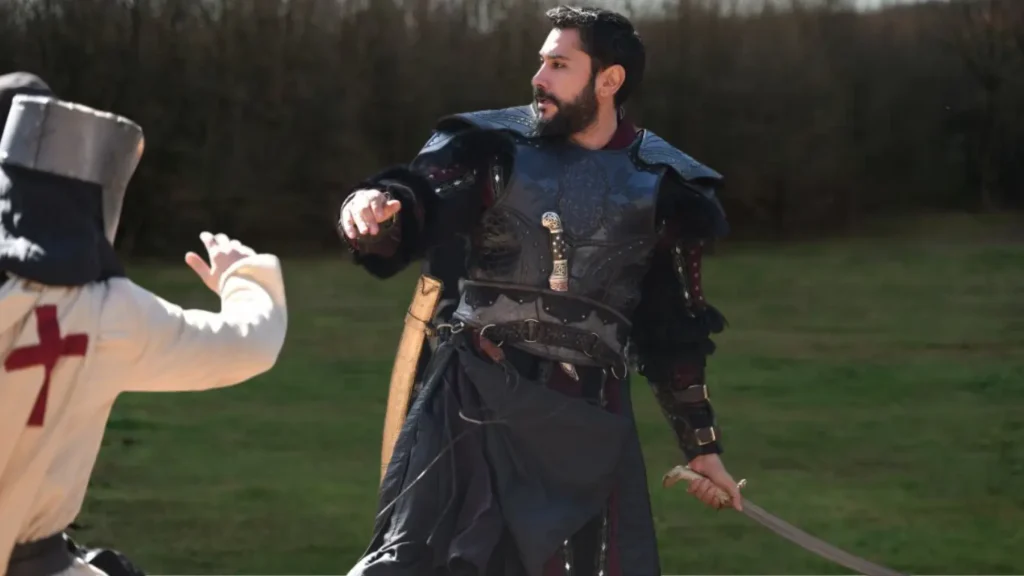
| Cinematic Technique | Purpose | Impact on Story |
| Dynamic Camera Angles | Enhances emotional engagement | Creates urgency and intimacy |
| Color Palettes | Reflects themes | Amplifies tension and depth |
| Lighting Techniques | Focuses on key characters | Highlights inner conflict |
The sound design, too, plays a critical role. Orchestral scores build tension and underscore moments of triumph or despair, enriching the storytelling experience.
Cultural Significance and Historical Accuracy: A Balanced Perspective
Kudus Fatihi Selahaddin Eyyubi is more than just a historical series; it is a cultural reflection of shared heritage, offering viewers a chance to connect with significant historical events. The series presents Saladin’s military achievements and underscores the values and beliefs that shaped his leadership—such as justice, unity, and faith—which continue to inspire audiences today.
However, the series takes some creative liberties for dramatic effect. While many scenes are rooted in historical events, some elements are exaggerated or simplified to enhance the narrative. Viewers must differentiate between the dramatized portrayal and the complexities of natural history. Below is a comparison of artistic representation and historical facts:
| Aspect | Dramatized Representation | Historical Fact |
| Battle Strategies | Flawless strategic execution | Actual campaigns had significant flaws |
| Personal Relationships | Heroic bonds emphasized | Alliances often driven by politics |
| Religious Context | Singular motivation through faith | Decisions influenced by multiple factors |
By approaching the series critically, viewers can appreciate its entertainment value and cultural resonance while remaining mindful of its historical interpretations.
Final Thoughts
Kudus Fatihi Selahaddin Eyyubi goes beyond historical recounting; it offers a profound narrative of leadership, faith, and resilience. The series’ rich storytelling, impressive character development, and visual craftsmanship make it a powerful exploration of a pivotal historical period. It encourages us to reflect on values like unity and justice, which resonate today. As we anticipate future episodes or further reflections on this remarkable historical tapestry, we are reminded that the past is a living dialogue—a testament to the stories that shape us and the histories we choose to remember.
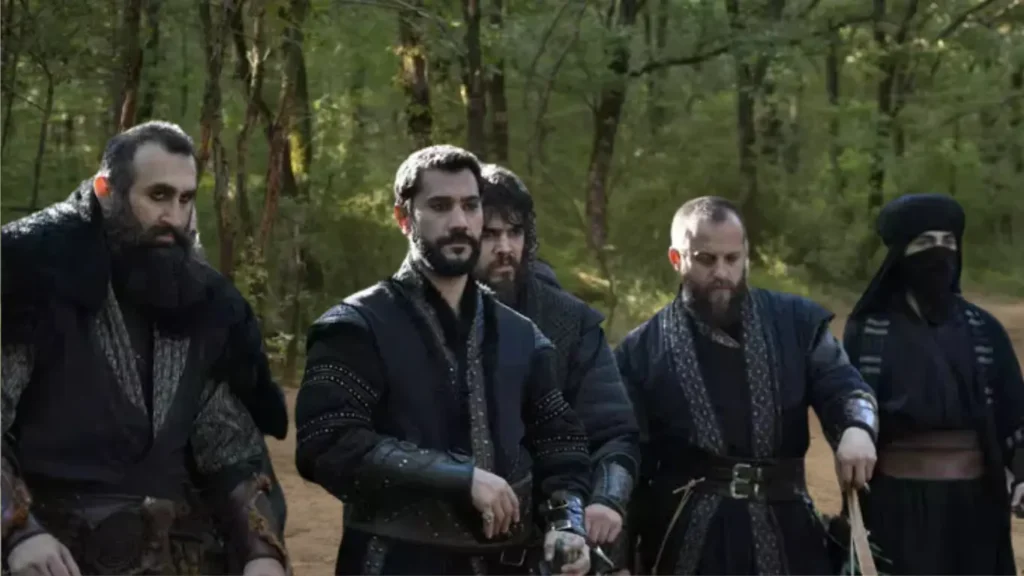
You may also like :
Turkish Series
Kalpazan Cast Plot And Summary – Turkish Series
Siyah Kalp: Black Heart: A Captivating Turkish Drama
Bir Gece Masali: A Night’s Tale – Turkish Series 2024
Hudutsuz Sevda (The Brave) – Turkish Dramas 2023
Karadut Turkish Dramas Synopsis – 2024
Leyla Hayat Ask Adalet – Turkish Series 2024
External links :
IMDb: Saladin: The Conquerer of Jerusalem
Frequently Asked Questions (FAQ)
Q1: What is Kudus Fatihi Selahaddin Eyyubi about?
A1: Kudus Fatihi Selahaddin Eyyubi is a historical drama exploring Saladin’s life and legacy, the respected Muslim leader who played a pivotal role during the Crusades. The series delves into his military strategies, personal beliefs, and the complex socio-political landscapes of the 12th century.
Q2: How accurate is the historical portrayal in the series?
A2: While the series is rooted in historical events, it takes creative liberties for dramatic purposes. Some elements are exaggerated or simplified to enhance storytelling, so viewers must distinguish between dramatized fiction and historical facts.
Q3: What themes are explored in the series?
A3: The series explores leadership, justice, unity, faith, and the complexities of human relationships during conflict. It portrays Selahaddin not only as a military leader but also as a symbol of resilience and moral integrity.
Q4: What makes the series visually appealing?
A4: The series enhances storytelling with dynamic camera angles, carefully selected color palettes, and symbolic imagery. The sound design, including orchestral scores, is critical in building tension and highlighting key moments.
Q5: Why is Selahaddin Eyyubi an important historical figure?
A5: Selahaddin Eyyubi, known as Saladin in the West, was a key figure during the Crusades who became renowned for his leadership, military prowess, and chivalry. He is remembered for reclaiming Jerusalem and his efforts to unify the Muslim world, embodying values of justice and mercy.
Q6: Is the series suitable for all audiences?
A6: The series contains historical battle scenes and complex political narratives, which may not be suitable for young children. It best suits audiences interested in history, drama, and rich character storytelling.
Q7: Will there be more seasons of Kudus Fatihi Selahaddin Eyyubi?
A7: While there is no official confirmation about future seasons, the series has left the door open for further exploration of Selahaddin’s life and the historical events that shaped his legacy. Fans eagerly await announcements about new episodes.

